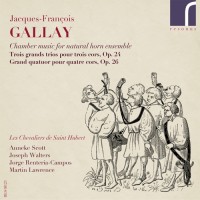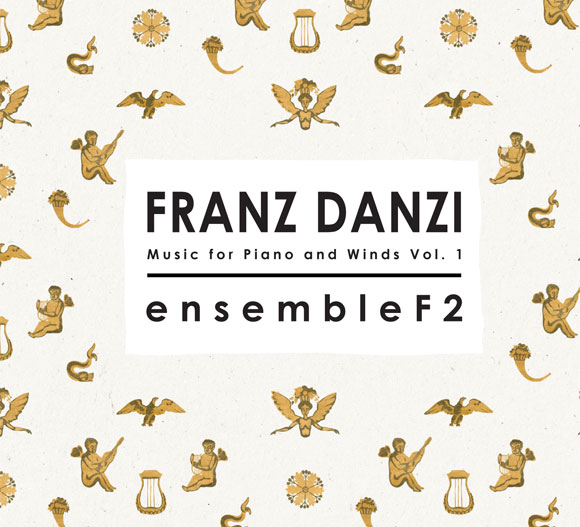Two recent recordings by natural hornist Anneke Scott provide valuable additions to our catalog of nineteenth century works for the horn. Both CDs were released in 2013:

Les Chevaliers de Saint Hubert. Jacques-François Gallay: Chamber Music for Natural Horn Ensemble, Resonus (ASCD02), 2013. http://www.resonusclassics.com/gallay-chamber-horn
Personnel: Anneke Scott, Joseph Walters, Jorge Renteria-Campos, and Martin Lawrence, horns
The music on this recording includes Gallay’s Grand Trios for Horns, Op. 24 and Grand Quartets, Op. 26. The playing is fantastic and an added bonus is that the performers use horns from the period of Gallay’s lifetime. These include horns built by Lucien-Joseph Raoux in 1812 and Marcel-Auguste Raoux in the 1820s, with the only exceptions being two horns by Andreas Jungwirth that are copies of a Lausmann horn built c. 1790. The acoustics of the hall in which the recording was made (Musée national de Port Royale des Champs, France) allow the subtleties of ensemble playing to come through nicely. These include details such as breathing and the slightly different tone qualities of each player. The intonation throughout is spot on, and the quick passages display true virtuosity from all players, and the wonderful colors created by the different open and stopped tones come through with amazing clarity.

ensembleF2, Franz Danzi: Music for Piano and Winds, Vol. 1, Devine Music (DMCD002), 2013.
http://www.devinemusic.co.uk/cdsales.php?id=5
Personnel: James Eastaway, oboe; Jane Booth, clarinet; Anneke Scott, horn; Ursula Leveaux, bassoon; Steven Devine, piano
This recording includes three pieces for fortepiano and winds by Franz Danzi, all performed on period instruments. The pieces are his Quintet in D minor for fortepiano, oboe, clarinet, horn, and bassoon, Op. 41, the Sonata in E-flat major for Horn, Op. 28, and the Sonata in B flat major for Clarinet, Op. 54. Scott uses a hand horn made by Marcel-Auguste Raoux, c. 1820, accompanied by an 1815 Viennese pianoforte by Johann Fritz.
The playing here is world class. The balance between the instruments is superb and the individual artistry is delightful. Scott’s artistry is on full display in the sonata for horn. Her playing ranges from playful and delicate to forceful and jaunty and her command of the instrument is evident throughout the work. It is especially noteworthy that Scott displays equal command of the horn’s upper and lower registers. Her ability to bring out vocal-quality cantabile passages, quick technical passages, tricky stopped tones, and tasteful ornamentations shines through in this recording, just as it does in her recordings of the Gallay chamber pieces for horns above. But here, in Danzi’s music, her adept handling of the horn’s low register, from stopped tones to falsetto notes, is equally stunning.
The 1815 fortepiano used for this recording is an interesting instrument. Evidently, various makers would sometimes add devices to these instruments in order to allow the pianist to create sounds that imitated all sorts of things, such as crashing cymbals, for example. The fortepiano by Fritz featured here actually has four separate sound effects built into it. The liner notes describe them as “a set of three bells, a cymbal crash, a drum and a fagotto (a sheet of paper that covers the lower strings, creating a buzzing ‘bassoon’ sound).” The inclusion of these effects was very surprising to hear at first, but definitely added an interesting and pleasing variety to the performance.
Scott has written exceptional liner notes for both of these recordings. Her extensive research and clear writing style provide plenty of historical details about the composers, the compositions, and the instruments.
-- Eric Brummitt



